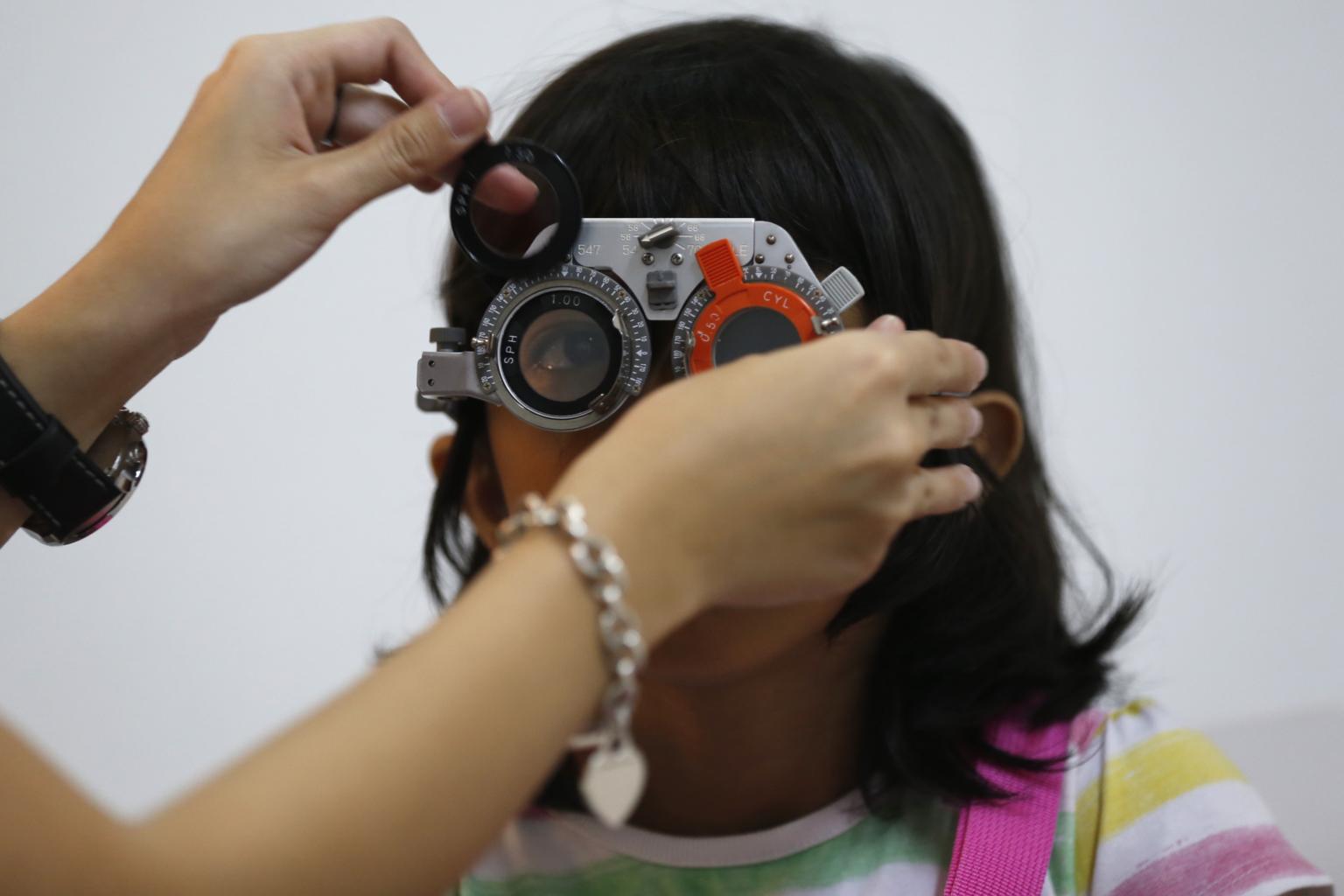New eye centre to study how myopia can be prevented in children
Sign up now: Get ST's newsletters delivered to your inbox

The centre can help come up with feasible solutions that could reduce myopia rates in young children.
PHOTO: ST FILE
Follow topic:
SINGAPORE - Eye specialists here are looking into light settings needed by children that could help prevent the onset of myopia, which could mean a possible change in lifestyle.
Researchers had previously found that having outdoor playtime is important as the presence of ultraviolet rays in natural sunlight trigger the production of a chemical known as dopamine, which helps to prevent myopia.
The study, which was published in April last year in the British Journal Of Ophthalmology, found that Singaporean children spent only one to 1½ hours outdoors each weekday, and one to two hours outdoors per day on weekends.
This is lower than the time children in Australia and Britain spent outdoors - about two to three hours each day.
So eye specialists from the Myopia Specialist Centre, which was launched on Thursday (May 26) at Camden Medical Centre, are looking to zero in on the exact components of ultraviolet light that is key in dopamine production.
This can help eye experts to determine the proper lighting, intensity and colour of light needed by children here when they are reading and writing, as well as to recommend the amount of time needed for outdoor play, said Dr Stan Isaacs, who is the centre's director.
This, in turn, can help eye specialists come up with feasible solutions that could reduce myopia rates in young children - which sets in at around 8½ years old.
Dr Isaacs noted that Singapore has been named the myopia capital of the world, with predictions showing that 80 per cent to 90 per cent of all Singaporean adults will be myopic by 2050. Over 65 per cent of children are myopic by the time they are in Primary Six.
This was further exacerbated by the Covid-19 pandemic, with lifestyle changes such as less outdoor playtime and more screen time driving up myopia rates, he added.
Dr Isaacs, who is also a consultant optometrist at eye clinic Stan Isaacs Optometrists, said that there has been a sharp increase in the instances and severity of myopia among children aged seven to 12, when comparing pre-pandemic against post-pandemic data.
"Out of more than 1,000 patients seen by the clinic from January to December 2019, over 14 per cent needed myopic interventions. That number doubled after the Covid-19 pandemic," he added. Such interventions include the prescription of spectacles, contact lenses and atropine eyedrops.
Out of more than 1,000 patients from June 2020 to June last year, more than 25 per cent needed myopic interventions, said Dr Isaacs.

The average myopia progression also spiked post-pandemic, from -0.39 dioptres (commonly known as 39 degrees) per year from 2019 to 2020, to -0.59 dioptres per year from 2020 to last year.
With the rates of myopia increasing rapidly, more individuals will develop myopia-related pathology, which are complications that can lead to degenerative changes in the eye, said Dr Isaacs.
As such, he and Mr Steve Newman, senior technical director of contact lens company Menicon, have partnered myopia experts around the world to set up the Myopia Specialist Centre.
Aside from offering myopia treatment, the centre will also function as a myopia research and education centre, he added.
The cost of a full myopia assessment is $240 for the first visit, and $125 for subsequent visits.

